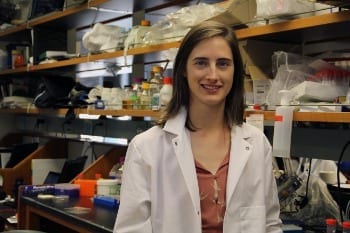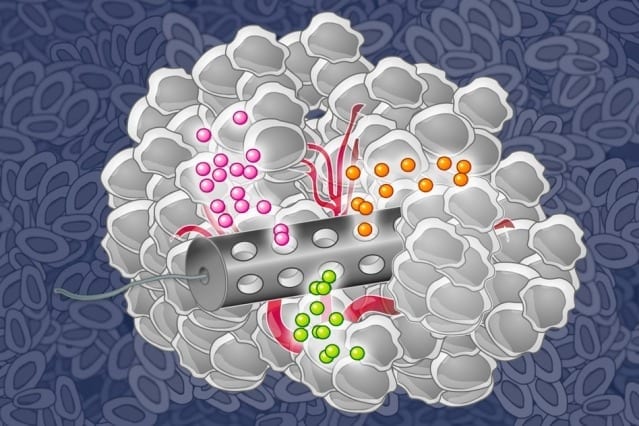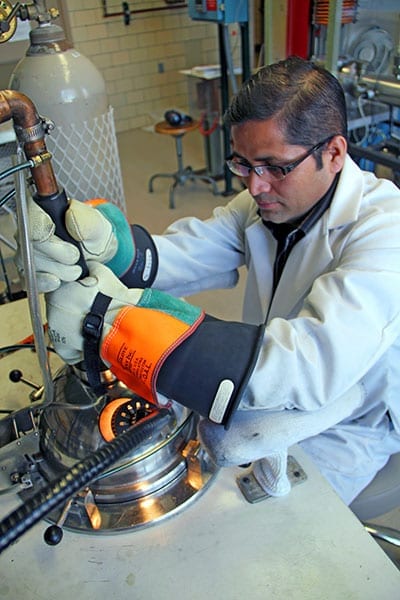
A simple strategy could make first-line antibiotics more effective against resistant bacteria
Researchers have identified a single, simple metric to inform medication regimen design that could bring an entire arsenal of first-line antibiotics back into the fight against drug-resistant pathogens.
A computer simulation created by Hannah Meredith, a biomedical engineering graduate fellow at Duke University, revealed that a regimen based on a pathogen’s recovery time could eliminate an otherwise resistant strain of bacteria. In theory, a database of recovery times for bacterial and antibiotic combinations could allow first-line antibiotics to clear many resistant infections.
Meredith has already begun lab work to create such a database, and early tests are confirming her model’s predictions.
The study appears in PLOS Computational Biology on April 23, 2015.
“Bacteria are forming resistance to antibiotics faster than we can make new ones, so there is a real need to use the antibiotics that are already on the market more efficiently,” said Meredith. “We hope this research will help hospitals improve patient outcomes while also making our antibiotics last as long as possible.”
The computer simulation models the relationship between bacteria, antibiotics and a method of resistance called beta-lactamase—an enzyme that degrades beta-lactam antibiotics, one of the largest and most-used classes of antibiotics. Many beta-lactam antibiotics are currently disregarded out of concern for the infection being completely resistant to that type of antibiotic—even if the antibiotic appeared to be effective in the lab. The new model, however, reveals that the infection might be temporarily sensitive to the antibiotic before the beta-lactamase degrades the drug and allows the infection to recover.
“You can think of this as a race between the cells and the antibiotics,” said Lingchong You, the Paul Ruffin Scarborough Associate Professor of Biomedical Engineering at Duke and Meredith’s advisor. “Before their beta-lactamase degrades the antibiotics, the cells are still sensitive and can be killed. But the antibiotics degrade faster than the cell population declines, allowing some cells to survive and repopulate.”
When clinicians realize an infection is resistant, they often skip straight to some of the strongest antibiotics available. But the study indicates that if they instead changed the dosing frequency of first-line antibiotics such that each dose is delivered while the bacteria are weakened during their recovery period, some infections could be cleared without skipping to the last resort.
Doctors also need to be careful, however, not to wreck native populations of bacteria vital to human health. A database detailing the responses of different strains to different antibiotics could allow Meredith’s computer model to determine the most efficient regimen to keep total exposure to a minimum. It could also indicate if multiple doses would not work, letting clinicians know when it is time to call in the heavy artillery.
Read more: Finding New Life for First-Line Antibiotics
The Latest on: Antibiotics
[google_news title=”” keyword=”Antibiotics” num_posts=”10″ blurb_length=”0″ show_thumb=”left”]
via Google News
The Latest on: Antibiotics
- Synthetic Antibiotics Could Improve Treatment of “Superbugs”on May 7, 2024 at 6:21 am
Technology Networks spoke to Dr. Ishwar Singh to learn more about the challenges of drug-resistant infections, the discovery of teixobactin and the benefits of synthetic antibodies.
- I was a fit and healthy teenager but ended up in a wheelchair after taking antibiotics – I may never walk properly againon May 6, 2024 at 11:39 pm
TIA LAZZERI-MADDEN was a fit, healthy teenager, a musician with her whole life ahead of her. But a rare condition has left Tia, 18, having to use a wheelchair. She began to experience some side ...
- Overuse of antibiotics in newborns with suspected sepsison May 6, 2024 at 10:11 pm
Newborns in Sweden are given antibiotics for suspected sepsis to an unjustified extent. This is according to a study by the University of Gothenburg ...
- COVID-19 EFFECTS: ANTIBIOTICS OVERUSE BRINGS HEALTH CHALLENGESon May 6, 2024 at 1:55 am
MBABANE – The effects of COVID-19 continue to haunt nations as new evidence from the World Health Organisation (WHO) shows that the extensive overuse of antibiotics has brought about health challenges ...
- Can a personalized antibiotics, prebiotics, and probiotics combo help treat IBS?on May 4, 2024 at 11:00 pm
A pilot study suggests that a personalized combination of antibiotics, prebiotics, and probiotics may help treat the symptoms of post-infectious irritable bowel syndrome (IBS).
- WHO alarmed by high use of antibiotics in COVID-19 caseson May 2, 2024 at 10:44 pm
New evidence from the World Health Organization (WHO) has shown that the extensive use of antibiotics during the coronavirus pandemic may have worsened the “silent” ...
- Chick-fil-A changes to chicken with antibioticson May 2, 2024 at 10:29 am
Chick-fil-A changed their chicken supply from chicken with no antibiotics (NAE) to chicken with No Antibiotics Important to Human Medicine (NAIHM) earlier this spring, meaning more of the company's fo ...
- No Antibiotics Needed – Revolutionary Chronic Wound Treatment Could Help Millionson April 28, 2024 at 1:29 am
An international team of scientists has developed a new treatment for chronic wounds that uses ionized gas to activate a wound dressing, without the need for antibiotics. The treatment involves the pl ...
- WHO: Antibiotics Overused in COVID-19 Patients During Pandemicon April 26, 2024 at 8:50 am
The overuse of antibiotics could have exacerbated the spread of antimicrobial resistance, according to the World Health Organization.
- How AI hallucinations could help create life-saving antibioticson April 24, 2024 at 5:42 am
Generative artificial intelligence (AI) models often hallucinate and invent information that isn't factual or can't be cited from source material. This behavior is usually a weakness, especially given ...
via Bing News










